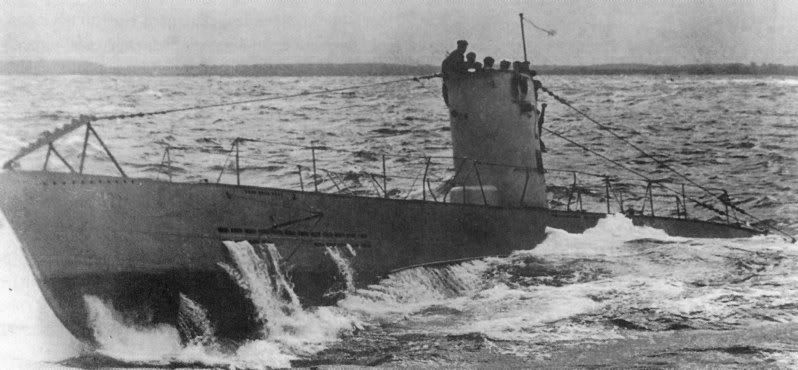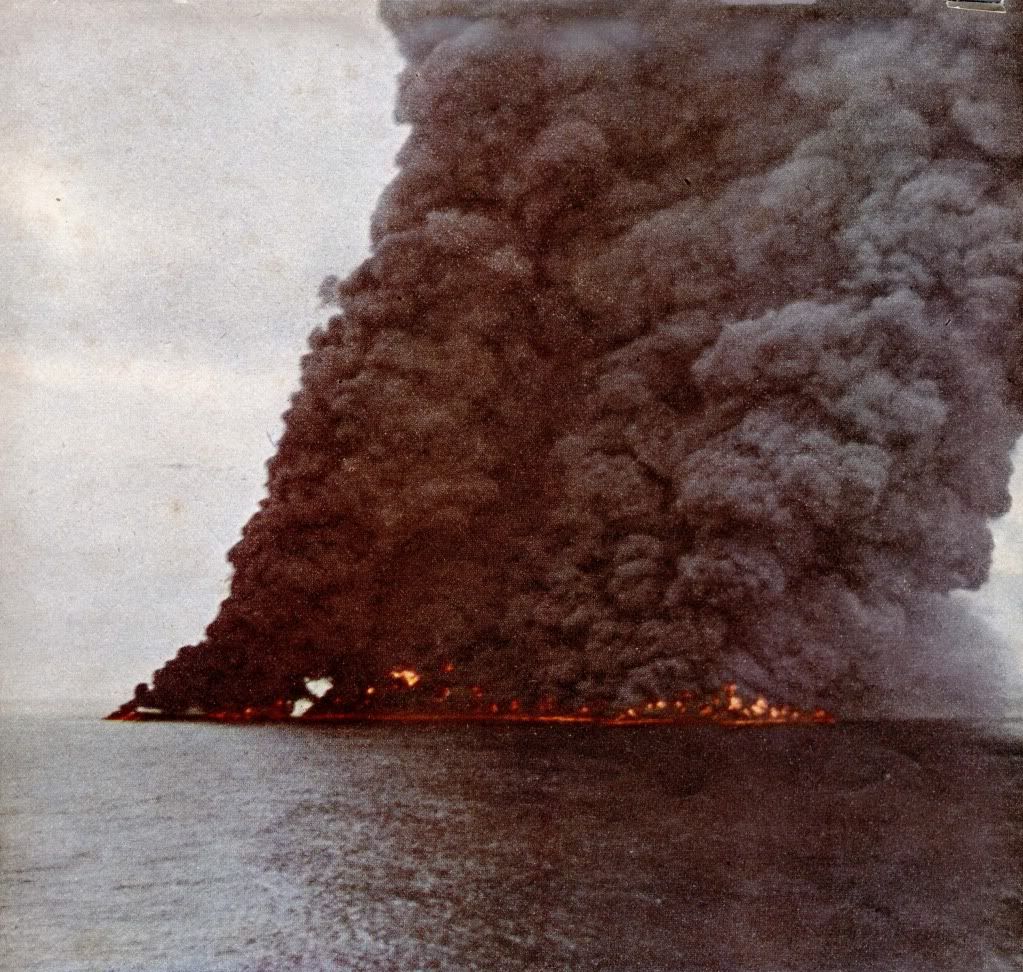After watching Das Boot I have become interested in german U-boats.Can anyone give me information on U-boats.Web sites and video clips of them thanks confused:
An excellent book to read on the subject is Business In Great Waters-The U-Boat Wars 1916-1945, by John Terraine. Published by Mandarin. ISBN 0-7493-0387-5
digger.
or watch u 571 its a great movie about both german and allied submarines
U-Boat War, three part documentary film series, is also worth watching.
That film was total rubbish
the mass media Hollywood films are really rubbish better watch the documentaries which are other than propaganda .
I was going to say the same thing till I saw your post.
The film, U571 was not based on any American deed. No Uboat was taken like that, no Americans got the enigma machine that way. No nothing. And notice the well shaved men.
Das Boot was cool. Doubt if it really happened but the sub was accurate, the procedures pretty accurate, the stink (if you could smell it) was accurate.
And the advanatages the British Navy had were accurate!
It was a miserable little coffen that took some mighty brave men places.
My hats off to those men.
Deaf
“Das Boot” is based on the book of the same title written by Lothar-Günther Buchheim who describes his personal experiences here serving on U-96.
However I remember when the movie was released in the early 80’s a lot of U-Boot vets were disgusted by the film because of the profanity and the raunchy behaviour displayed by the characters.
I didn’t like it much either. but there was a disclaimer at the end of it.
there’s been a lot of versions of Das Boot. including a G rated one. mine is GP or X. sailors do cuss a lot. i know
…and they can be cruel as well!

ive seen that photo before. if they use it for food fine. those boats didn’t have enough room to store food. hmmm what does polar bear taste like ??? :mrgreen:
Dunno…cold?
Still it would have been much healthier to have a polar bear steak back in the 40’s than it would be today.
After all I’m sure any variety in food is much appreciated when you have to scratch off the mould before eating a slice of bread.
remember in Das Boot i think it was the nr 2 officer who said we must be grateful for anything that grows on this boat??? green mold is healthy for you :mrgreen:
Well, in all fairness, polar bears aren’t known to be gentle, sweat creatures. They are quite aggressive and are one of the few animals on earth that will hunt people for food…
and their very efficient at it to !!!
A while back on a seriese called, "Survivorman’, Les Stroud the one who went out to various wild locations went to Baffin Island, way up at the top of Canada. He wanted to survive in the tundra (the episode was called “Arctic Tundra”.
Les always carries just a mulitool and a few very basic pieces of equipment, much as you would scrounge if your plane crashed or car broke down.
Well the guide would not take him out unless he kept a rifle with him. I think it was a .338 Winchester Magnum.
He did not think much of the rifle till one morning he found bear tracks around his makeshift tent. After that, he always kept it near by, loaded, and ready for use. And yes, he slept with it!
Deaf
battle of the atlantic. should play all 12 parts
http://www.youtube.com/watch?v=s6JV9_Kn2F4&videos=FH90SeYuzjM&playnext_from=TL&playnext=1
Although WW II saw extensive submarine campaigns on all of the world’s oceans, certain submarine designs still are less known to general public, honorable ladies and gentlemen. During the 1930s the rejuvenated German shipyards began producing one particularly forgotten type of a submarine craft, in attempt to make the Germany a sea power without a major capital expenditures, with its primary role to be in the training schools, preparing German naval personnel for war duties – the Type II, also known as Weddingen class coastal submarine.

Type II – Weddingen class
Designed in 1933 as a highly cost-efficient coastal patrol submarine, training and minelaying craft by a rearmament-oriented shadow-company of Krupp A.G. which, officially, claimed to be the Dutch shipbuilding firm, and built in the Crichton-Vulcan shipyard in Turku (Finland) for Finnish navy back there in 1933, this tiny but incredibly original and utilizable vessel was too small to undertake sustained operations far away from the home support facilities. Nevertheless, operational history of this type was highly intriguing, and this vessel possessed a number of highly interesting construction features as well.
As you know, to operate underwater a submarine has a strengthened steel pressure hull that provides protection from water pressure to the crew, machinery and equipment. Generally, a double-hull technique was used in those times, with the space between the inner (pressure) hull and outer hull providing room for water ballast and fuel tanks. This double-hull feature also provides additional protection for the pressure hall from nearby detonations of antisubmarine weapons. Until recently, above the hull and extending the length of the submarine there was a non-watertight, free-flooding superstructure that formed the main deck for use when the submarine was surfaced. This submarine, however, only had a single, all-welded hull with no watertight subdivision within the single crew compartment – a significant improvement in technology over the previous riveted or combination riveted-and-welded body, making for a sturdy vessel.
Space inside the boat was indeed very limited. Being quite small (length 40,9m, with 250 tons of surface displacement), this submarine carried only five torpedoes (3 in forward tubes, plus two reloads, or 12 mines - there were no aft tubes!) and a detachable 20 mm AA gun. The small size and tendency to roll while surfaced inspired the early crews to dub the boat Einbäume (dugout canoe).

Type II possessed a distinct tendency to roll while on surface in rough seas
The 24-man crew lived in the forward area around the torpedoes, sharing 12 bunks. Four bunks were also provided aft of the engines for the engine room crew, and even the officers had no separate quarters - they simply bunked with the crew. Kitchen, storages and sanitary facilities were very cramped, thus long patrols were highly difficult.
Diesel engines propelled the boat on the surface and electric motors while submerged, with two Diesel engines developing 700 HP - sufficient power for a maximum surface speed of 13 knots. When submerged, two electric motors provided 360 HP of power, giving a maximum submerged speed of 7 knots. Twelve tons of diesel fuel was provided, allowing a maximum range of 1,600 miles at 8 knots. The batteries allowed sufficient power supply for 35 miles long travel while submerged at 4 knots. Later variants had larger electric engines, larger battery capacity, and increased fuel capacity. Some boats were also fitted with a Schnorhel device, which further enhanced their ability to operate out to the Azores-Iceland line. Fifty units of this type were produced before and during the WW 2, while two units (U-120 and U-121)were initially intended for export to the Royal Yugoslav Navy, but they were subsequently overtaken by the Kriegsmarine at the start of the Second World War.
The contemplated war-role for these small submarines was to protect the iron ore Baltic Sea lines of communication to and from Sweden, which was primarily a coast-wise mission. They were also considered as ideal training boats. However, modifications of the design were quick in coming as war became inevitable and imminent in 1936 and it was clear that the boats would have to serve as the primary attack platforms until the high-seas types VII and IX were available in sufficient numbers.
Operational history of this type therefore started on 19th day of August 1939, when 10 Type II submarines of 3rd and 5th Flotillas were detached for Baltic operations under the command of Fregattenkapitän Oskar Schomburg. Several future “aces”, like Erich Topp and Joachim Schepke, began their careers by scoring well in these boats. They were indeed limited in their combat efficiency due to their small size, which resulted in a small operational area and minimal offensive capability, however these limitations were a deliberate choice and they were seen to be very effective within their intended role. It sounds almost unbelievable, but these tiny vessels actually have made 291 operational sorties, sinking 153 merchant ships with 509,606 GRT, as well as 6 allied submarines, 7 minesweepers, 3 destroyers and 8 small crafts.

Burning remnants of the Allied tanker that was set on fire by torpedos launched from German submarine in 1942
However, the most intriguing sequence in war-time history of this type is their war commitment during the Black Sea operations of the Deutsche Kriegsmarine. As you know, in 1941 Germany invaded Soviet Union and it soon become obvious that a presence of submarines in the Black Sea to bring to a halt Soviet shipping there was urgently needed. Unable to use the Bosporus, the only naval route into the Black Sea, six boats of this type (U-9, U-18, U-19, U-20, U-23 and U-24) were raised in dry pier at Kiel in late September of 1941, moved to the canal and taken by it to the River Elbe, and after that upstream to Dresden. There they were partially dismantled and taken by heavy truck-tractors to Ingolstadt on the Danube, and then ferried downstream to the Black Sea and Romanian port Constanta, where they were re-assembled, and assigned to the 30. Unterseebootsflottille that was founded in October of 1941 under the command of Lieutenant-Commander Helmut Rosenbaum. History of this almost forgotten unit ended in September 1944, when Romania switched sides. The three last Flotilla boats (U-19, U-20 and U-23) were scuttled on 10 and 11 September 1944 near the Turkish coast.
In contrast with other German submarine types, losses were light. This, of course, reflects their use as training boats, although accidents during training accounted for several vessels.
However, these boats were very maneuverable, a relatively small but surprisingly combat-effective crafts and indeed valuable in their primary training role, providing Germany with practical experience in submarine construction and operation, thus making the foundation for the larger boats that were to follow.
BTW: If you are interested for some really good Golden Hollywood Epoch films about U-boats, then, honorable ladies and gentlemen, just watch one of the best ever made, old-fashioned but well-built films about high-class duels on the high seas between the German submarine and an American destroyer. Robert Mitchum and Kurt Jürgens were absolutely brilliant in their roles, portraying true men of honor, fully dedicated to their duty that they were called upon. A tiny preview is available here:
http://www.youtube.com/watch?v=t7Vme9jUhlo
In the meantime, as always – all the best! 
